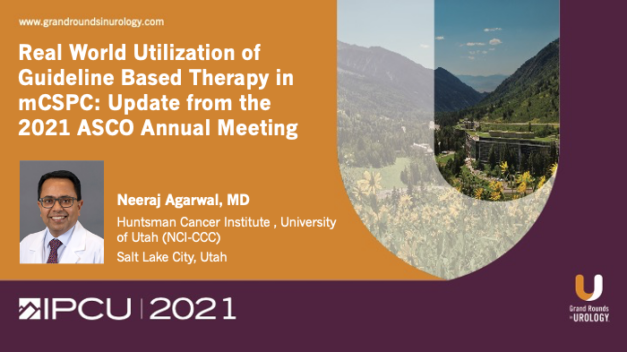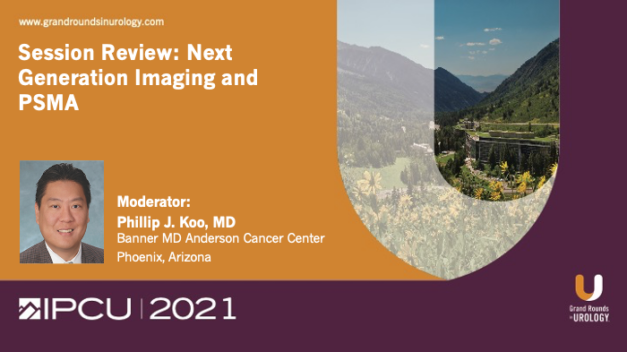Real World Utilization of Guideline Based Therapy in mCSPC: Update From the 2021 ASCO Annual Meeting
Neeraj Agarwal, MD, Professor of Medicine and Presidential Endowed Chair of Cancer Research at the Huntsman Cancer Institute at the University of Utah in Salt Lake City, examines the underutilization of effective intensified androgen deprivation therapy (ADT) for patients with metastatic castration-sensitive prostate cancer (mCSPC). He begins by emphasizing the unprecedented efficacy of intensified ADT in improving survival for patients with mCSPC. Dr. Agarwal then asserts that, despite those findings, less than a third of patients are being offered intensified ADT therapies as first-line (1L) treatment for mCSPC, even four to five years after data has become available. Dr. Agarwal supports this argument by citing three studies from the 2021 ASCO Annual Meeting: real-world utilization of advanced therapies and racial disparity among patients with mCSPC, a Medicare database analysis of over 35,000 patients (2009-2018); real-world 1L treatment patterns in patients with mCSPC in a U.S. health insurance database (2014-2019); and real-world treatment patterns among patients diagnosed with mCSPC in community oncology settings (2014-2019). Dr. Agarwal summarized the most salient finding: less than one-third of men received intensified treatment (ADT combined with docetaxel or with a novel hormonal therapy) as their first-line treatment for mCSPC. Additionally, most men received ADT alone or ADT combined with a nonsteroidal antiandrogen as their 1L treatment, even as recently as 2019, with Black and Hispanic men even less likely than White men to receive an intensified treatment. Further, most men whose cancer had spread to soft organs (e.g., liver, lungs) had received ADT alone. Dr. Agarwal concludes by reemphasizing that the vast majority of patients are not receiving intensification therapy which is backed by level-one evidence. Dr. Agarwal points to the importance of education, awareness, and access as critical to developing better science around implementation and leading to more patients being able to receive these transformative treatments.
Read More

